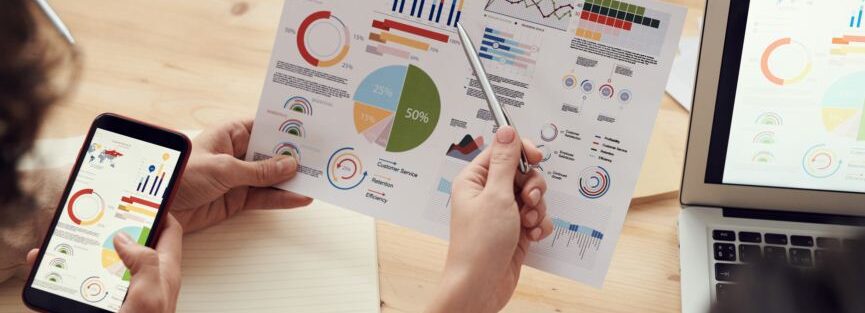Amex GBT -American Express Global Business Travel company- is a US based multinational travel and meetings programs management corporation based in Jersey City, New Jersey. Operating in nearly 120 countries it is one of the world’s largest business travel providers with 16,000 travel professionals in more than 140 countries, managing over $19 billion a year in corporate travel spend. Amex GBT was looking to increase its market share by differentiating its core services and was seeking to manage and drive their online travel program capabilities forward. For this major transformation, it sought the help of Business Intelligence (BI). Amex GBT then made a strategic investment in creating smart analytics around their booking software and developed a Multi-Talent Cloud Architecture to use it. Every single user would view a common screen, from where they could pick and choose the KPIs (Key Performance Indicators) of their liking (customize thereafter). This solution equipped users to view their travel ROI (Return On Investment) by categorizing it into three categories -cost, time and value. The results of Amex GBT were quite encouraging. Creating real ‘Time to Value’ the new user onboarding was reduced from one week to a single day. It recommended users of possible saving potential such as flight timings, date of the booking, date of travel and introduced 115 new metrics that enable users to better manage their ‘travel-spend.’ Most importantly, ‘they reduced the cost by 30%’.
When the largest beverage company in the world, Coca-Cola realized its manual reporting processes restricted access to real-time sales and operations data, it turned to BI. The BI platform automated manual reporting processes, saving over 260 hours a year—more than six 40-hour work weeks. When Coca-Cola used another BI for product development it finally and successfully created a new ready-made beverage based on what it discovered from analytics-that is, based on BI analytics’ findings of most favorite customer choice of beverage flavor combinations-such as mixing Cherry Sprite flavor to other selected flavors- it formulated new ready-made flavors for sale.
𝐖𝐡𝐚𝐭 𝐢𝐬 𝐁𝐈?
Traditionally, ‘BI’ used to be ‘traditional business reporting’ – analysis of printed business reports (such as annual report), forwarding any ‘queries’ about the report to the management and waiting for answers for weeks perhaps. Today digital technology has changed ‘‘traditional business reporting’ to a BI process so that no such waiting takes place anymore and most of the info made available immediately using analytics and dashboards from a single view. Even if not immediate, asked info can be received within one to two days.
For businesses to profit and grow, it needs to gain a competitive edge and needs good information. This information can be internally or externally obtained and can come from many sources. One of the key info sources is data; Data on markets, competition, substitute products and services, price fluctuations, new supply and demand sources. The insights and info gathered from analyzing such data today becomes the BI- which can also be broadly defined as “business info gathered from analyzing various data sources using environments such as applications, processes, strategies, products, relevant systems and technologies, processes, data mining and machine modules etc. that enables collection, analysis, presentation and dissemination of business intelligence resulting in business decision making.”
𝐁𝐈 𝐢𝐬 𝐚 𝐜𝐲𝐜𝐥𝐞
The cycle of BI starts from raw data gathering. The data is categorized and stored for users to ‘access and analyse.’ The user starts to ‘interact’ with the system looking for what they search. Once they access they ‘analyse’ and ‘discover’ insights they then can ‘share’. The system will be promoted by the management to its employees and a ‘governing / managing structure’ of it is established (and if already established, to be developed further). This ‘cycle of analytics’ shows that BI is not a linear process, but a cycle.
𝐇𝐨𝐰 𝐝𝐨𝐞𝐬 𝐚 𝐛𝐮𝐬𝐢𝐧𝐞𝐬𝐬 𝐮𝐬𝐞 𝐁𝐈?
Businesses of all forms can use BI, even supermarkets and convenience stores. For example, a supermarket, using business analytics can identify various aspects of demand for a product using BI. It can, for example, discover that the peak times of frozen food sales, customer demographics, what weights /pack sizes that mostly are picked up, customize such products being loaded to shelves based on what they ‘discover’ from BI and even reduce loading in non-peak times thereby extending shelf-lives of frozen foods that are in the stores.
The administration of supermarkets can see demand levels for frozen food types across the entire network immediately and customize and optimize bulk delivery of frozen food brands, types, and package sizes to different supermarket outlets. It can even refrain from supplying certain frozen foods to certain sales outlets if BI shows them that certain items of certain sizes are not ‘moving’ in certain outlets.
A network of fuel stations can, using BI, instantly identify what types of fuels and lubricants are most in demand and on what days and times each product is least in demand/not in demand, and then can inform its suppliers to prioritise accordingly.
𝐌𝐨𝐫𝐞 𝐭𝐡𝐚𝐧 𝐝𝐚𝐬𝐡𝐛𝐨𝐚𝐫𝐝𝐬
In both the above cases, the businesses can use BI to see an important output sought from BI-‘patterns’. Patterns of demand, patterns of customers and patterns of selling date/times. Still, even more important info can also be gained-in that, sales and profit forecasts.
Thanks to data mining and warehousing technologies, business info about the specific segments and demographics can be obtained. Still, such deep analytics are a waste of time unless the data from analytics are informed, or communicated to the publics (selectively) or as necessary, to marketing division. This is the most critical moment where PR and communications integrate to BI. PR can convert the BI info to an understandable and usable manner and present it to the decision-making table. The raw data need to be transformed to comprehensible modules of Market Intelligence relating to market segments and PR and communications can help in this greatly. On the other hand, BI can, using its own analytics measure the effectiveness of company’s communications and PR (including marketing communications) to the publics and help ‘focused, accurate message targeting’ without delay (in real time) for maximum outcomes. An important power BI has bestowed on PR and marketing campaigns is the ability to change variables of campaigns on the go.
More and more businesses are venturing to BI to transform their revenues and profits. They have also improved on their handling of BI by increasingly using it for their real info needs rather than using them to experience modern technical dashboards. As entire corporates move to surrender their processes to BI, communication of such data and info in a meaningful manner has never been as important as it is today. PR and Communications therefore have become key strategic processes to the organization. This analysis leads to a shocking possibility: How would you see marketing and sales functions developing? i.e – Are Business Intelligence equipped PR and Communications being considered by you?



